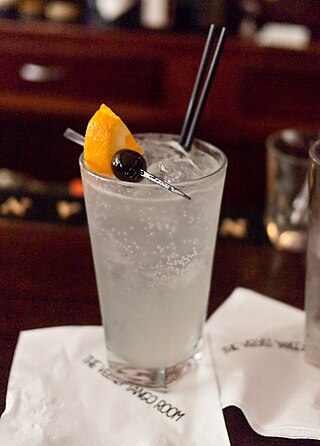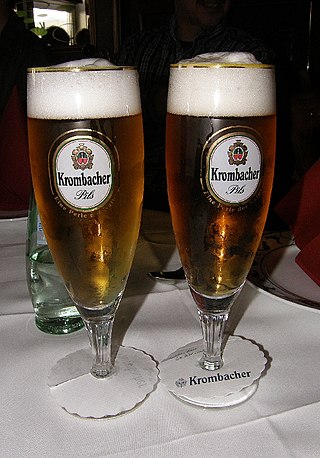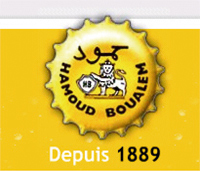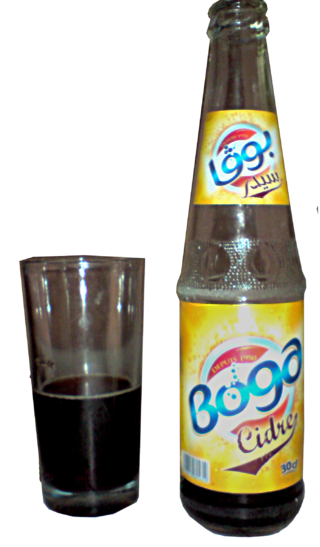
The Tom Collins is a Collins cocktail made from gin, lemon juice, sugar, and carbonated water. This "gin and sparkling lemonade" drink is typically served in a Collins glass over ice with a cherry garnish. A non-alcoholic "Collins mix" mixer is produced, enjoyed by some as a soft drink.

Shandy is beer mixed with a lemon flavoured beverage, often lemonade, usually half lemonade and half beer, resulting in a lower ABV for the finished drink. Shandies are popular in Europe, Australia, New Zealand, South Africa, and Canada.

Lemonade is a sweetened lemon-flavored drink.

The negroni is a cocktail, made of equal parts gin, vermouth rosso, and Campari, generally served on the rocks, and commonly garnished with an orange slice or orange peel. It is considered an apéritif.

Limeade, also called lime soda, is a lime-flavored, sometimes carbonated, drink. It is usually sweetened with sugar or sweeteners. A common method of preparation is to juice limes and combine the juice with simple syrup or honey syrup, along with some water and perhaps more sugar or honey. Vodka or white tequila can be added to make a limeade cocktail. The exact ingredients, preparation and names of the drink can vary by country.

Pimm's is an English brand of gin-based fruit cup but may also be considered a liqueur or the basis of a sling or punch. It was first produced in 1823 by James Pimm and has been owned by Diageo since 1997. Its most popular product is Pimm's No. 1 Cup, commonly used for the Pimm's cup cocktail.
Limoncello is an Italian lemon liqueur mainly produced in southern Italy, especially in the region around the Gulf of Naples, the Amalfi Coast and Sicily. It is the second-most popular liqueur in Italy and is traditionally served chilled as an after-dinner digestif. It is also a popular homemade liqueur, with various recipes available online and in print.

A sour is a traditional family of mixed drinks. Sours belong to one of the old families of original cocktails and are described by Jerry Thomas in his 1862 book How to Mix Drinks.

Hamoud Boualem is an Algerian soft drink manufacturing company, producing fizzy drinks popular in Algeria and exported to France, the United Kingdom, and Canada. Founded in 1878 with its first factory in the Belcourt neighborhood of Algiers, it is among the country's oldest companies. Its products include sodas such as "Selecto", "Hamoud", "Slim", and various flavors of syrup. Its head offices are located at in central Algiers.

Tinto de verano is a cold, wine-based drink popular in Spain. It is similar to sangria and is typically made up of 1 part of table red wine and 1 part soda, usually lemonade. Traditional brands of soda, or gaseosa, such as La Casera, can be replicated by mixing Sprite or 7-Up with carbonated water. The drink is served over ice, often with a slice of lemon or orange.

The Pimm's cup is a cocktail that is popular in England, in the United Kingdom. It is one of numerous fruit cups, a type of cocktail with gin, a soft drink, and fruit. Its primary spirit is Pimm's No. 1 Cup, a gin-based beverage flavoured with fruits and spices invented around 1823 as a health drink.

A "fizz" is a mixed drink variation on the older sours family of cocktail. Its defining features are an acidic juice and carbonated water. It typically includes gin or rum as its alcoholic ingredient.

Boga is a brand of Tunisian carbonated soft drinks, produced by the Société de Fabrication des Boissons de Tunisie (SFBT). The name "Boga" is the contraction of the French words for beverage "Boisson" and carbonated "Gazeuze". Boga is commercialized under 4 different flavors.

Mint lemonade is lemonade flavored with mint. It may be made with whole mint leaves, mint-flavored syrup, or pureed mint leaves, and may be served over ice cubes or blended with ice into a slush or smoothie. It is sometimes called a virgin mojito.
A sherry cobbler is a classic American cocktail made with sherry, sugar and citrus. Its origins are not known in detail, but is believed to have originated sometime in the early 19th century. The earliest known mention is from an 1838 diary of a Canadian traveler to the United States, Katherine Jane Ellice, but it did not gain international name recognition until Charles Dickens included the drink in The Life and Adventures of Martin Chuzzlewit.













